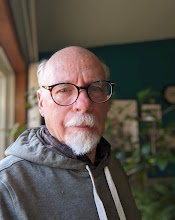 |
| The Road to Helium |
I
write romances. Not contemporary romances, but a more old fashioned
sort
of romance.
The romance at the heart of my stories is:
“A
quality or feeling of mystery, excitement, and remoteness from
everyday life” – Google
Dictionary
Definition
“A
prose narrative treating imaginary characters involved in events
remote in time or place and usually heroic, adventurous, or
mysterious” – https://www.merriam-webster.com/dictionary/romance
“A
work of fiction depicting a setting and events remote from everyday
life, especially one of a kind popular in the 16th
and 17th
centuries” –
https://en.oxforddictionaries.com/definition/romance
“A
novel or other prose narrative depicting heroic or marvelous deed,
pageantry, romantic exploits, etc, usually in a historical or
imaginary setting.” – https://www.dictionary.com/browse/romance
“In
the strictest academic terms, a romance is a narrative genre in
literature that involves a mysterious, adventurous, or spiritual
story line where the focus is on a quest that involves bravery and
strong values, not always a love interest.” –
https://literaryterms.net/romance/
As
I wrote in my last post, though I have long
considered myself a science fiction writer, both my science
fiction stories,
and my writing style, have
long been out of fashion in science fiction. I’ve
come to realize that
calling them science fiction or fantasy in 2018 is a stretch.
The
closest they come to science fiction is the now mostly obsolete
“planetary romances” of Barsoom, Pellucidar,
and
the like. And
the truth is that I’ve come to see that my tastes have never had
much in common with the mainstream science fiction.
What
my
stories
really are, are romances.
In my stories the “remoteness from everyday life” comes not from
the
history
or exotic locales of earth, but from future, and imaginary
worlds. While this slots
them into
the
science fiction or fantasy genre, these
imaginary worlds serve merely as a stage and a backdrop to the story.
Science fiction is, at its heart, focused on ideas, concepts, speculations on the future, and these
days,
war. War
seems to be the central conflict
of
so
many stories these
days.
None
of these are things
which I care to write about. Wars
dominate fantasy as
well,
and in
addition they often
tell
epic stories
that can
span generations. Again, neither of these
characteristics are ones that I
care to use in my narratives. So, in the end, I just don’t
see myself writing under the
banners of
science fiction or fantasy anymore.
The
problem, of course, is that I can’t write under the banner of
“romance” either, since that term
has
a very different meaning these days. Indeed, the one book that I
market
as a “romance”, Some
Day Days,
I’ve
discovered is
not a romance by
definition, since
it does not have a HEA – “happily ever after” –ending. Who
knew?
So what’s a fellow to do?
I
haven’t figured that out yet. I suppose it doesn’t
matter. It is merely
a
matter of marketing rather than writing,
and
I suppose marketing my
stories
as science fiction, one of the more popular genre, means that they
will find more readers than in
some
other genre, whatever that would be. No,
the point is that I now consider myself a
writer of classical romances set in imaginary worlds. Perhaps
banner I’m
marching under is "Imaginary World Romances" or less confusingly, “Imaginary World Adventures.” (I
just made those banners up, but what the heck?)







